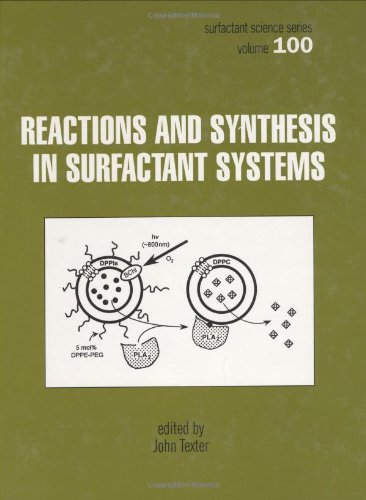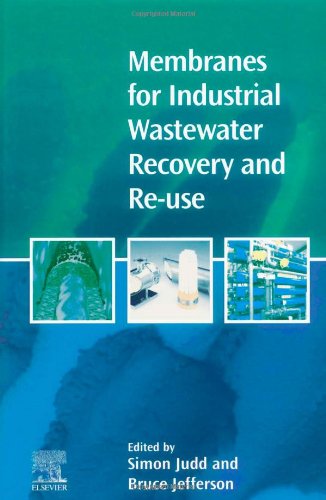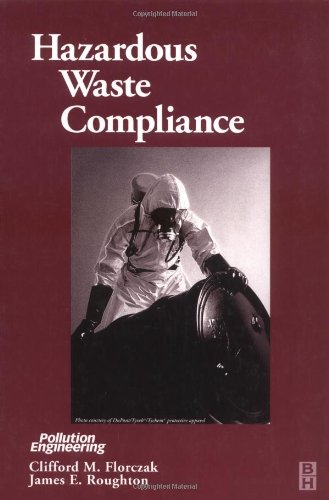John Texter9780824702557, 0-8247-0255-7
Table of contents :
REACTIONS AND SYNTHESIS IN SURFACTANT SYSTEMS……Page 1
Table of Contents……Page 10
Table of Contents……Page 0
Preface……Page 8
Contributors……Page 13
I. INTRODUCTION……Page 17
1. Soaps……Page 18
B. Sulfonation Technology……Page 19
1. Alkylarylsulfonates [10–12,15,16]……Page 20
b) Olefin Sulfonates…….Page 22
3. Alcohol Sulfates (ASs)/Alcohol Ether Sulfates (AESs)……Page 25
4. Sulfated Oils and Glycerides……Page 26
5. Sulfated Alkanol Amides……Page 27
2. Taurates……Page 28
5. Protein/Fatty Acid Condensates……Page 29
D. Phosphoric Acid Derivatives……Page 30
A. Alkoxylation Technology……Page 31
2. Aliphatic Polyoxyethylene Alcohols (AEs)……Page 34
4. Ethoxylated Oils and Glycerides……Page 35
IV. CARBOHYDRATE BASED SURFACTANTS……Page 36
A. Sorbitan Esters……Page 37
B. Sucrose Esters……Page 38
1. Synthesis of Alkyl Polyglycosides……Page 40
2. Fatty Acid Glucamides……Page 41
3. Properties of Alkyl Polyglycosides and Fatty Acid Glucamides……Page 43
1. Methyl Glucoside Esters……Page 44
2. Anionic Derivatives of Alkyl Polyglycosides……Page 45
A. Syntheses of Cationic Surfactants……Page 46
2. Ecological and Toxicological Behavior……Page 49
A. Betaines……Page 50
B. True Amphoterics……Page 52
2. Ecological and Toxicological Behavior……Page 54
REFERENCES……Page 55
I. INTRODUCTION……Page 61
A. Normal Ester Quats……Page 62
B. Betaine Esters……Page 63
F. Sugar Esters……Page 64
A. Cyclic Acetals……Page 65
B. Acyclic Acetals……Page 67
C. Ketals……Page 69
E. Surfactants Containing the N=C Bond……Page 70
IV. UV LABILE SURFACTANTS……Page 71
VI. CONCLUDING REMARKS……Page 72
REFERENCES……Page 73
I. INTRODUCTION……Page 75
1. Cationic Geminis……Page 76
2. Anionic Geminis……Page 77
4. Sugar Derivatives……Page 79
(b) Miscellaneous…….Page 81
B. Oligomers……Page 82
A. Air-Water Interface……Page 84
2. Effectiveness and Packing at the Air-Water Interface……Page 85
1. Adsorption Isotherms……Page 87
2. Interfacial Packing and Aggregate Geometry……Page 88
1. Alkyl Chain Length Dependence of the Cmc—Comparison with Monomers……Page 89
3. Spacer Chain Length Dependence of the Cmc……Page 92
1. Micropolarity, Solubilization Capacity, and Emulsification……Page 94
C. Morphology of the Aggregates……Page 95
(a) Micellar Growth…….Page 96
(b) Rheology…….Page 98
2. Vesicles and Other Low-Curvature Aggregates of Surfactant Oligomers……Page 99
1. Micellar Electrokinetic Chromatography……Page 101
1. Synthesis of Colloidal Metallic Particles……Page 102
3. Gemini Surfactants as Templating Agents for Mesoporous Material……Page 103
a) Hydrophobic Spacer……Page 104
b) Hydrophilic Spacer……Page 107
2. Variable Hydrophobic Chain……Page 108
3. Miscellaneous……Page 112
1. Sulfates……Page 114
2. Sulfonates……Page 115
3. Phosphates……Page 116
C. Nonionic Gemini Surfactants……Page 118
1. Cationic Trimers……Page 119
3. Unequal Number of Ionic Headgroups and Alkyl Chains……Page 120
REFERENCES……Page 121
B. Carbohydrates in Cellular Biochemistry……Page 127
C. Use of the Oxidized Form of Reducing Sugars……Page 128
B. Models of Micelle Structure……Page 132
B. Relationship Between Micellar Shapes and the Solubilization of Proteins……Page 133
V. APPLICATION OF SUGAR-BASED BOLAFORMS: EMULSIFICATION OF LIPOPHILIC COMPOUNDS……Page 134
B. Anti–Aspergillus fumigatus Activity……Page 136
C. Soluble Sugar-Based Surfactants as Potential Inhibitors of HIV Infection……Page 137
D. Anti–HIV-1 Activities……Page 139
REFERENCES……Page 142
I. INTRODUCTION……Page 144
A. Synthesis and Characterization in scCO2……Page 146
B. Application in Heterogeneous Polymerizations……Page 149
IV. PERFLUOROPOLYETHER SURFACTANTS……Page 152
V. NONPOLYMERIC AMPHIPHILES IN CO2……Page 153
VI. DENDRITIC SURFACTANTS……Page 154
VII. NEW FRONTIERS—REVERSIBLE CONTROL OF SELF-ASSEMBLY……Page 155
REFERENCES……Page 157
II. PLASMENYLCHOLINE AND DISPLASMENYLCHOLINE LIPOSOME SYSTEMS……Page 159
A. Lipid Synthesis……Page 160
B. Photooxidative Triggering of Plasmenylcholines [10,11]……Page 161
D. Drug Delivery via Acid-Catalyzed Triggering of Diplasmenylcholines [18]……Page 163
A. Synthesis of a Vinyl Ether PEG Lipid Conjugate……Page 164
B. Acid-Triggered Release Characteristics of DOPE:BVEP Liposomes……Page 165
IV. CATIONIC VINYL ETHER LIPIDS IN GENE DELIVERY……Page 166
REFERENCES……Page 167
B. Motivation……Page 169
A. Bulk Solution–Interface Equilibration……Page 170
B. Ferrocenyl Redox Chemistry……Page 171
A. Interfacial States Far from Equilibrium……Page 174
B. Bolaform Disulfide……Page 175
2. Nonequilibrium Surface Tension……Page 176
A. Effects of Aggregation on Surface Tension……Page 179
C. Catanionic System……Page 180
D. Mass Transport……Page 181
A. Electrochemical Control of Marangoni Effects……Page 182
B. Addressable, Patterned Dewetting……Page 183
C. Light-Addressable Release of Liquid from Capillaries……Page 184
REFERENCES……Page 187
I. INTRODUCTION……Page 188
A. Structure of Micelles……Page 190
B. InterfacialWater……Page 191
C. Substrate Solubilization……Page 192
D. Ion Binding……Page 193
A. Pseudophase Model……Page 195
1. Ion-Exchange Model……Page 197
3. Poisson-Boltzmann Equation……Page 199
4. Treatment of Coion Reactions……Page 201
B. Other Treatments……Page 203
A. Unimolecular Reactions of Anionic Substrates……Page 204
1. Variations in Surfactant Structure……Page 205
2. Investigation of Variation in Substrate Structure……Page 209
1. Investigation of Systematic Variations in Surfactant Structure……Page 210
V. BIMOLECULAR REACTIONS……Page 212
A. Relation to Mechanism……Page 213
B. Ion Specificity……Page 224
1. Hydrophobicity……Page 234
2. Polar Substituents……Page 236
E. Surfactant Structure……Page 237
A. Vesicles……Page 239
B. Premicelles……Page 242
VII. APPLICATIONS OF SURFACTANTS……Page 245
VIII. CONCLUSIONS……Page 248
SURFACTANTS……Page 249
REFERENCES……Page 251
I. INTRODUCTION TO DIELS-ALDER REACTIONS……Page 260
A. Medium and Catalytic Effects on Diels-Alder Reactions……Page 261
B. Special Effects of Water on Diels-Alder Reactions……Page 262
II. INTRODUCTION TO MICELLAR CATALYSIS……Page 263
A. Kinetic Models……Page 264
A. Effect of Micelles on the Rate of Diels-Alder Reactions……Page 265
B. Effect of Micelles on the Endo-Exo Selectivity……Page 269
C. Micellar Effects on the Regioselectivity……Page 270
E. Effects of Micelles with Catalytically Active Counterions……Page 271
REFERENCES……Page 273
A. Aims of the Chapter……Page 277
B. Background……Page 278
C. What Does the Chemical Trapping Method ‘‘See’’ in the Interfacial Region of Surfactant Assemblies? What Information Does It Provide?……Page 279
A. Arenediazonium Ion Chemistry……Page 280
C. Relationship of the Dediazoniation Mechanism to Measured Selectivities……Page 282
1. Nonionic Nucleophiles……Page 283
E. Application of the Pseudophase Model to Chemical Trapping……Page 284
G. Limitations of the Chemical Trapping Method……Page 285
A. Dediazoniations and Chemical Trapping in Aggregates: A Brief History……Page 286
2. Competing Side Reactions……Page 287
D. Protocol for HPLC Analysis of Reactions and Products……Page 288
2. Azo Dye Method……Page 289
A. Hydration Numbers of and Terminal OH Distributions in Nonionic Micelles……Page 290
1. Interfacial Water and Anion Concentrations……Page 292
3. Estimation of Degree of Ionization, a, of Cationic Micelles……Page 295
6. Interfacial Halide Ion Concentrations in Zwitterionic Micelles and Vesicles……Page 296
7. Counterion Exchange and Affinity……Page 297
2. Estimation of Distribution Constants, Mathematical Treatment, and Results……Page 298
3. Alcohol Distributions in Water-in-Oil and Interfacial Compositions of Bicontinuous Microemulsions……Page 300
B. Heterolytic Cleavage: Counting Peptide Bonds. Topologies and Orientations of Aggregate-Bound Polypeptides……Page 301
ACKNOWLEDGMENTS……Page 302
REFERENCES……Page 303
C. Emulsions……Page 307
A. Mechanisms……Page 308
B. Aqueous Solubility……Page 309
D. Emulsions in Flow Cells……Page 311
2. PTC Use……Page 312
2. Organic Phase Electrical Conductivity……Page 313
G. Poorly Aqueous Soluble Organic Substrates……Page 314
A. Solubilization Equilibria……Page 315
B. Surfactant Adsorption……Page 316
1. Emulsified Systems……Page 317
2. Substrate and Intermediate Solubilization……Page 318
(a) Anodic Nitration of Aromatics…….Page 319
(d) Selectivity…….Page 320
(g) Stereoselectivity…….Page 321
(b) Microheterogeneous Systems (Micelles, Microemulsions)…….Page 323
(a) Emulsion Systems…….Page 324
(b) Micelles, Microemulsions, and Related Systems…….Page 326
3. Passivation……Page 327
C. Solvent Effects and Specific Interactions……Page 329
REFERENCES……Page 330
I. INTRODUCTION……Page 335
II. CONDUCTIVE MICROEMULSIONS……Page 336
A. Mass Transport of Electroactive Solutes……Page 337
B. Dynamics and Interfacial Structures at Electrodes……Page 338
B. Control by Mediator Formal Potential……Page 340
D. Control by Reactant Partitioning……Page 342
B. Unsymmetrical Carbon-Carbon Bonds and Cyclizations……Page 343
VI. CATALYTIC ELECTRODES IN MICROEMULSIONS……Page 345
REFERENCES……Page 346
2. Choice of Organized Molecular Systems……Page 348
A. Intramolecular Cyclization……Page 349
B. Lactonization and Lactamization Activated by C1ClPyI or C16ClPyI……Page 351
A. Polymerizing Metathesis of Norbornene……Page 352
1. Polymerization in Water Dispersion……Page 353
C. Vinyl Polymerization of Norbornene Derivatives……Page 354
IV. ASYMMETRIC INDUCTION AT THE ‘‘PSEUDOMICELLAR’’ INTERFACE OF A CHIRAL AMPHIPHILIC DENDRIMER……Page 355
V. CONCLUSIONS……Page 356
REFERENCES……Page 358
II. WATER-IN-CO2 MICROEMULSIONS……Page 359
III. WATER-IN-CO2 EMULSIONS……Page 360
IV. ORGANIC REACTIONS IN W/C MICROEMULSIONS AND EMULSIONS……Page 361
A. Spectroscopy……Page 363
VII. STABILITY OF ORGANIC POLYMER EMULSIONS AND LATEXES……Page 364
VIII. IN SITU STUDIES OF THE MECHANISM OF DISPERSION POLYMERIZATION……Page 366
REFERENCES……Page 367
A. Addition of an Organic Solvent to Solubilize Both Reactants……Page 369
C. Single-Phase Micellar Catalysis……Page 370
E. Reactions in Two-Phase Micellar Systems……Page 372
A. Materials……Page 373
B. Reaction Systems……Page 374
A. Alkylation of Phenol……Page 375
B. Etherification of Epichlorohydrin……Page 377
C. Factors to Be Considered in Modeling Multiphase Micellar Reaction Systems……Page 378
REFERENCES……Page 380
B. Chemical Systems……Page 382
A. Nature and Types……Page 383
A. Hydrolysis……Page 384
B. Catalytic Hydrolysis……Page 387
2. Reduction……Page 388
E. Comparison of Micelles and Microemulsions……Page 389
B. Separations……Page 390
V. FUTURE DIRECTIONS……Page 391
REFERENCES……Page 392
I. INTRODUCTION……Page 393
II. STRUCTURAL CHARACTERIZATION TECHNIQUES……Page 394
III. PERFORMANCE EVALUATION TECHNIQUES AND TESTS……Page 395
IV. STOPPED-FLOWTECHNIQUE APPLIED TO MEASURING ACID NEUTRALIZATION……Page 396
V. SUMMARY……Page 400
REFERENCES……Page 401
I. INTRODUCTION……Page 403
II. KEY GIANT VESICLE FOUNDATIONS……Page 404
III. CHEMISTRY……Page 405
IV. BIOCHEMISTRY……Page 407
V. MATERIALS AND APPLICATIONS……Page 409
VI. SUMMARY……Page 412
REFERENCES……Page 413
A. Preparation of the Surfactant and Dispersions……Page 415
C. Contact Plating……Page 416
D. Rate of Film Growth……Page 417
F. Film Properties……Page 418
IV. CONCLUSIONS……Page 419
REFERENCES……Page 420
B. BLL Reaction……Page 421
B. Dissolution of Ester in the Aqueous Phase……Page 423
D. Micellization of Product Sodium Alkanoates……Page 424
E. Solubilization of Ester into Micelles……Page 425
A. Short-Chain-Length Ester: Ethyl Butanoate (C-4)……Page 427
C. Medium-Chain-Length Ester: Ethyl Hexanoate (C-6)……Page 428
3. Processes and Rate Laws……Page 430
(b) Dissolution Rate of Ethyl Ester in Aqueous Phase:……Page 431
B. Solubility Enhancement due to Ethyl Alcohol and Sodium Alkanoate……Page 432
C. Micellization Variables g, cmc, and Km for Sodium Alkanoates……Page 433
D. Solubilization Variables g’ and p……Page 434
V. CONCLUSIONS……Page 435
REFERENCES……Page 436
I. INTRODUCTION……Page 437
II. HISTORICAL DEVELOPMENT……Page 438
A. Rate of Polymerization……Page 440
B. Particle Nucleation……Page 442
C. Swelling of Polymer Particles……Page 447
D. Particle Growth……Page 451
IV. TECHNICAL REALIZATIONS……Page 454
V. ROLE OF SURFACTANTS DURING EMULSION POLYMERIZATION……Page 455
VI. OPEN PROBLEMS AND FUTURE DEVELOPMENTS……Page 456
REFERENCES……Page 457
A. Why Study Microemulsion Polymerization?……Page 462
A. Phase Behavior……Page 463
B. Microstructure and Characterization……Page 464
A. Kinetics……Page 465
B. Molecular Weight Distribution……Page 466
D. Monomer Partitioning……Page 467
A. Morgan Model for Kinetics and Size Distributions……Page 469
D. Monomer Partitioning……Page 473
E. Glass Transition Effects……Page 474
V. CONCLUSIONS/DIRECTIONS FOR FUTURE RESEARCH……Page 475
REFERENCES……Page 476
B. (Macro)emulsion Polymerization……Page 477
F. Nomenclature Dificulties……Page 478
A. Inverse Microemulsion Polymerization……Page 479
1. Surfactants for Inverse Microemulsion Polymerization……Page 483
2. Thermodynamics, Kinetics, and Mechanism……Page 485
(a) Locus of Initiation…….Page 486
3. Characteristics of Microlatexes……Page 487
(a) Copolymerization of Hydrophilic and Hydrophilic Monomers…….Page 488
B. Inverse (Macro)emulsion Polymerization……Page 489
(a) Initiation by Oil-Soluble Initiators…….Page 490
(b) Initiation by Water-Soluble Initiators…….Page 493
3. Inverse Emulsion Copolymerization……Page 495
C. Inverse Miniemulsion Polymerization……Page 496
2. Kinetics and Mechanism……Page 497
E. Inverse Dispersion Polymerization……Page 498
2. Kinetics and Mechanism……Page 499
A. Latexes Obtained by Inverse Microemulsion Polymerization……Page 500
VI. CONCLUSION AND OUTLOOK……Page 501
REFERENCES……Page 502
I. INTRODUCTION……Page 506
A. General Aspects……Page 508
B. Free Radical Polymerization of Reactive Lipids……Page 509
C. Properties of Polymerized Vesicles……Page 510
A. General Aspects……Page 512
C. Polymerization of Hydrophobic Monomers in Lipid Bilayers……Page 513
D. Properties of Lipid Membranes with a Hydrophobic Polymer Scaffold……Page 514
E. Properties of Vesicle-Templated Polymer Particles……Page 515
REFERENCES……Page 518
A. Background……Page 520
B. Polyphenols and Enzymatic Synthesis……Page 521
III. POLYMER SYNTHESIS IN REVERSE MICELLES……Page 522
IV. SYNTHESIS IN A NOVEL SURFACTANT-BASED GEL SYSTEM……Page 525
REFERENCES……Page 528
I. INTRODUCTION……Page 530
A. Structure……Page 531
B. Properties……Page 532
B. Vesicles……Page 533
D. Bicontinuous Cubics and Microemulsions……Page 535
IV. CONTROLLING TEMPLATE BREAKTHROUGH……Page 537
REFERENCES……Page 539
II. ADMICELLAR POLYMERIZATION: THE PROCESS……Page 541
III. FUNDAMENTALS OF ADMICELLAR POLYMERIZATION……Page 543
A. Interfacial Adhesion Improvement in Polymer-Matrix Composites……Page 546
C. Conductivity Enhancement in Conductive Composites……Page 547
REFERENCES……Page 548
B. Benefits of Strong Attachment……Page 550
A. State of the Art……Page 553
1. European Network……Page 554
2. Further Studies……Page 557
3. Surfmers in Latexes for Biotechnologies……Page 558
(b) Miniemulsions…….Page 562
(d) Micellar-Emulsion Polymerization…….Page 563
A. The Meaning of Polymeric Stabilizers……Page 565
1. Suspension Polymerization……Page 566
3. Emulsion Polymerization……Page 568
REFERENCES……Page 573
A. Physical State……Page 579
1. Free Energy Within Single Phase Domains……Page 580
1. Emulsification of Organics……Page 581
1. Photographic Applications……Page 582
(c) Examples…….Page 583
(a) Hot Homogenization…….Page 584
(b) Cholesteryl Acetate…….Page 585
III. PRECIPITATION BY SOLVENT SHIFTING……Page 586
1. Organic-Inorganic Composites……Page 587
2. Protein Coacervation……Page 588
2. Color Instant Image Dyes……Page 589
4. Pharmaceutical Dispersions……Page 590
5. Block Copolymer Self-Assembled Particles……Page 592
A. Rapid Expansions of Supercritical Fluids……Page 593
B. Gas Antisolvent Process……Page 594
C. Solution Enhanced Dispersion by Supercritical Fluids……Page 595
A. Organic Pigments……Page 596
B. Pharmaceuticals……Page 597
(b) Steric Stabilization…….Page 599
3. Examples……Page 601
C. Stabilization by Polymerization……Page 602
E. Nanodiscs……Page 603
B. Solvent Shifting……Page 604
A. Precipitation in Reverse Emulsions……Page 605
B. Precipitation in Encapsulating Spheres……Page 606
C. Nanocolorant Precipitation……Page 607
REFERENCES……Page 608
1. Description of the Microemulsions……Page 610
2. Mechanism of Synthesis of Nanoparticles in Microemulsion……Page 611
1. AgBr Particles in AOT/Heptane/Water Microemulsions……Page 612
(a) Characterization of the Particles [27]…….Page 615
2. AgBr Particles in AOT/p-Xylene/Water Microemulsions……Page 617
4. Ag(Cl,Br) in AOT/n-Heptane/Water Microemulsions……Page 618
(a) Quantitative Aspects of Particle Formation…….Page 619
(b) (Ni,Co)2B Nanoparticles…….Page 621
(a) Synthesis of Platinum Particles…….Page 623
(c) Pt-ReO2 Particles…….Page 624
B. Nanoparticles of Cholesterol Prepared in Different Microemulsions……Page 625
4. Effect of Principal Compound Solution Volume……Page 627
5. Influence of Auxiliary Solvents……Page 628
7. Recovery of Nanoparticles……Page 629
IV. CONCLUSIONS……Page 630
REFERENCES……Page 631
I. INTRODUCTION……Page 633
II. EXPERIMENTAL METHODOLOGIES……Page 634
IV. EPITAXIAL GROWTH OF SEMICONDUCTOR NANOCRYSTALLITES……Page 635
V. CONCLUSION……Page 637
REFERENCES……Page 638
I. INTRODUCTION……Page 639
1. Film Preparation……Page 640
(b) Premade Particles…….Page 641
(c) In Situ Formation of Nanoparticles…….Page 642
2. Control of Particle Size……Page 643
(a) Particle Size Determination…….Page 644
(b) Factors Affecting Particle Size…….Page 645
(c) Stepwise Growth of Particles…….Page 647
(a) Particle Shape…….Page 648
(b) Mechanism of Particle Formation…….Page 649
(d) Rate of Reaction…….Page 650
B. Self-Assembling Films……Page 651
(b) Control of Particle Size…….Page 652
1. Film Preparation……Page 653
(a) Film Structure…….Page 654
(b) Particle Concentration and Film Thickness…….Page 655
1. Langmuir-Blodgett Films……Page 657
2. Layer-by-Layer Films……Page 658
B. Photobleaching……Page 659
ACKNOWLEDGMENTS……Page 660
REFERENCES……Page 661
II. SELF-AGGREGATION AND PHASE BEHAVIOR OF SINGLE-CHAIN SURFACTANTS……Page 666
III. PHASE BEHAVIOR OF BRANCHED, DOUBLE-CHAIN, AND MULTIPLE-CHAIN SURFACTANTS……Page 679
IV. PHASE BEHAVIOR OF MIXTURES OF SURFACTANTS……Page 693
V. MODELS DESCRIBING THE PHASE BEHAVIOR OF SURFACTANTS……Page 701
VI. MONOMER SOLUBILITY—A HANDS-ON MEASURE TO TAILOR THE AGGREGATION BEHAVIOR……Page 705
REFERENCES……Page 709
I. INTRODUCTION……Page 713
II. AN ISOLABLE, NONCOVALENT SPHERICAL MICELLE……Page 716
III. A DRY, NONCOVALENT SPHERICAL VESICLE……Page 718
IV. DRY, NONCOVALENT MICELLAR FIBERS……Page 720
V. DRY, NONCOVALENT VESICULAR FIBERS……Page 721
VI. CONCLUSION……Page 722
REFERENCES……Page 724
I. INTRODUCTION……Page 726
A. DNA Complexes with Unperturbed Liposomes……Page 727
D. Lamellar Lipid-DNA Phases……Page 728
A. DNA-Lipid Interactions……Page 729
B. DNA-Lipid Phases……Page 730
C. DNA Packing in Lamellar Aggregates……Page 731
IV. SUMMARY……Page 732
REFERENCES……Page 733
A. Microporous Materials……Page 734
B. Reverse Micelles……Page 738
C. Choice of Zincophosphates as the Microporous Materials for Growth in Reverse Micelles……Page 739
A. Synthesis Procedures with AOT Reverse Micelles……Page 740
2. Composition B……Page 741
3. Composition C……Page 742
C. Role of the Intramicellar pH in Influencing Crystal Growth Pathways……Page 743
D. Reasons for Crystallization Pathway Control with AOT Reverse Micelles……Page 745
III. EVALUATION OF WHY ZnPO-X IS NOT FORMED WITH AOT REVERSE MICELLES……Page 746
A. Nature of Zinc and Phosphate Reverse Micelles……Page 747
1. TMA as a Templating Agent……Page 750
2. DABCO as a Templating Agent……Page 751
3. Seeding Experiments……Page 752
REFERENCES……Page 754
I. INTRODUCTION……Page 757
A. Self-Assembly at Planar Interfaces……Page 759
2. Hydrophilic Solid Surfaces……Page 760
III. SURFACTANT MICELLES: EFFECTS OF INORGANIC PRECURSORS……Page 762
A. Basic Synthesis Conditions……Page 763
B. Acidic Synthesis Conditions……Page 764
C. Liquid Crystal Templating……Page 765
A. Nucleation at Crystalline Surfaces……Page 766
B. Nucleation at Isotropic Surfaces……Page 768
D. Order Enhancement Using External Flow and Electric Fields……Page 769
E. Nucleation at the Solid-Liquid-Vapor Contact Line……Page 770
V. CONCLUSION……Page 771
REFERENCES……Page 772
A. Surfactant Self-Assembly on Solid Surfaces……Page 775
B. Synthesis of Mesoporous Silica Films……Page 776
A. Materials……Page 777
C. Characterization……Page 778
B. Effect of Surfactant Type……Page 779
1. Lamellar Mesoporous Silica Films……Page 780
2. Cubic Mesoporous Silica Film……Page 781
3. Hexagonal Mesoporous Silica Film……Page 782
C. Deposition of Films on Solid Substrates……Page 784
1. Film Thickness……Page 785
2. Other Strategies for Controlling Film Mesostructures……Page 787
REFERENCES……Page 790
A. Mediation Between Incompatible Materials……Page 793
II. AMPHIPHILIC BLOCK COPOLYMER MICELLES AS NANOREACTORS……Page 794
B. Micropores Through Molecular Templating……Page 797
1. Low-Molecular-Weight Surfactant Templates……Page 798
3. Generating Porosity with Amphiphilic Block Copolymers……Page 799
4. Precipitation of Inorganic-ABC Hybrid Structures……Page 800
5. Lyotropic ABC Phases for ‘‘Nanocasting’’……Page 803
6. Sol-Gel Processing in ABC Bulk Phases……Page 807
IV. BIOMIMETIC MINERALIZATION WITH ABCs……Page 809
V. SUMMARY AND OUTLOOK……Page 811
REFERENCES……Page 812
II. TEMPLATING OF SILICATES AND ALUMINOSILICATES WITH CATIONIC SURFACTANTS UNDER BASIC CONDITIONS……Page 815
A. Proposed Mechanisms for Formation of MCM-41……Page 816
C. The Cubic MCM-48 Phase……Page 819
D. Phase Transitions in Systems with Strong Interface Interactions (S+I )……Page 820
IV. EXTERNAL FIELDS……Page 822
V. METHODS OF CONTROLLING PORE DIMENSIONS IN MCM-41……Page 823
VI. TYPES OF SURFACTANTS USED IN THE SYNTHESIS OF MESOPOROUS MATERIALS……Page 824
A. Syntheses with Neutral or Nonionic Surfactants……Page 826
B. Ligand-Assisted Templating of Porous Transition Metal Oxides……Page 828
VII. MORPHOLOGY OF MESOPOROUS SOLIDS……Page 829
IX. MESOPOROUS MATERIALS DERIVED FROM KANEMITE AND OTHER LAYERED PRECURSORS……Page 831
X. COMPOSITIONS CONTAINING NONSILICON HETEROATOMS……Page 834
XI. CLUSTER-SURFACTANT MESOSTRUCTURES……Page 835
XII. SURFACTANT-ASSISTED GALLERY FORMATION IN CLAYS……Page 837
A. Surfactants as Space Fillers……Page 838
B. Hybrid Organic-Inorganic Mesoporous Materials……Page 839
ACKNOWLEDGMENTS……Page 841
REFERENCES……Page 842







Reviews
There are no reviews yet.